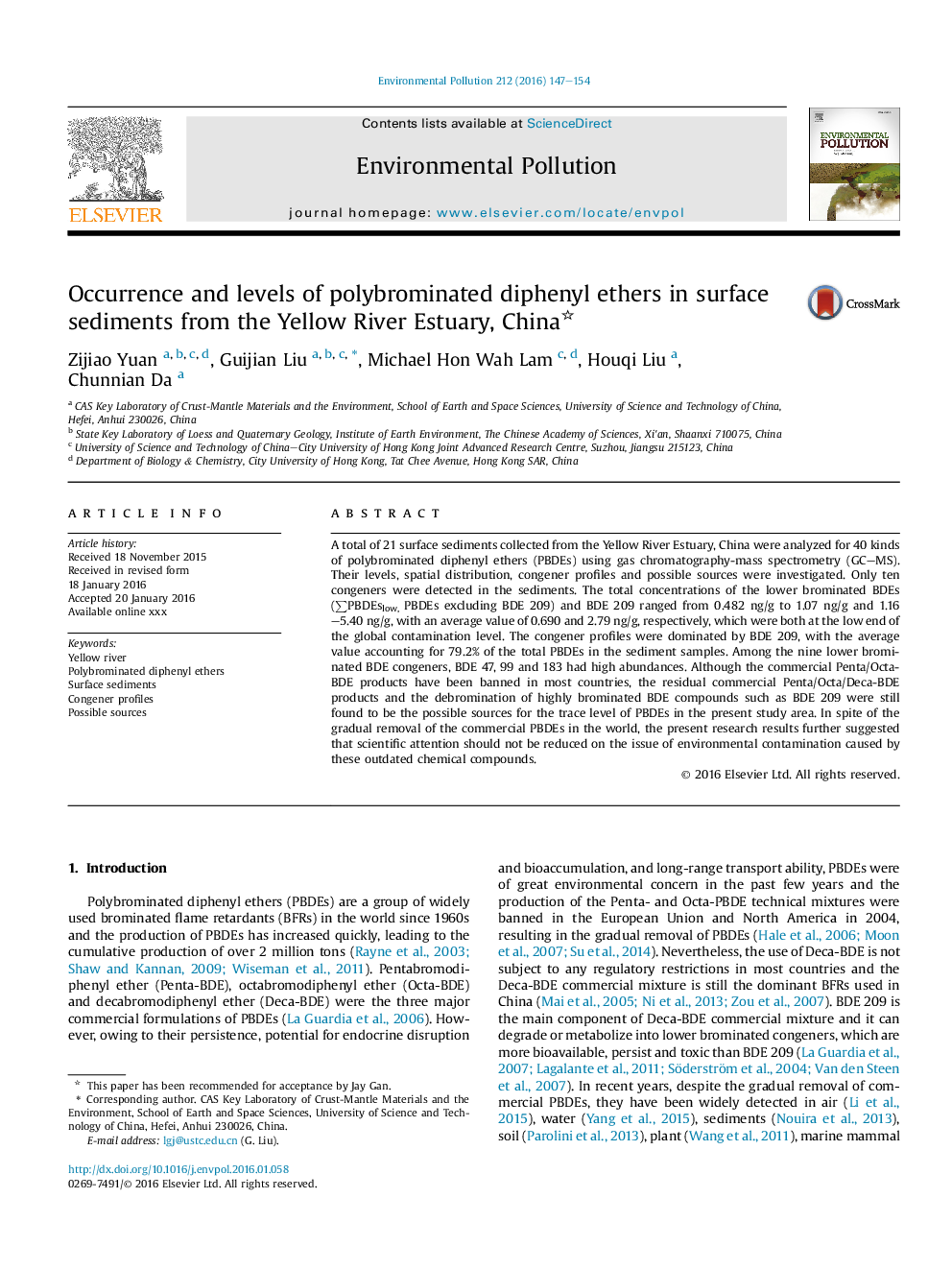| Article ID | Journal | Published Year | Pages | File Type |
|---|---|---|---|---|
| 6315607 | Environmental Pollution | 2016 | 8 Pages |
Abstract
A total of 21 surface sediments collected from the Yellow River Estuary, China were analyzed for 40 kinds of polybrominated diphenyl ethers (PBDEs) using gas chromatography-mass spectrometry (GC-MS). Their levels, spatial distribution, congener profiles and possible sources were investigated. Only ten congeners were detected in the sediments. The total concentrations of the lower brominated BDEs (âPBDEslow, PBDEs excluding BDE 209) and BDE 209 ranged from 0.482Â ng/g to 1.07Â ng/g and 1.16-5.40Â ng/g, with an average value of 0.690 and 2.79Â ng/g, respectively, which were both at the low end of the global contamination level. The congener profiles were dominated by BDE 209, with the average value accounting for 79.2% of the total PBDEs in the sediment samples. Among the nine lower brominated BDE congeners, BDE 47, 99 and 183 had high abundances. Although the commercial Penta/Octa-BDE products have been banned in most countries, the residual commercial Penta/Octa/Deca-BDE products and the debromination of highly brominated BDE compounds such as BDE 209 were still found to be the possible sources for the trace level of PBDEs in the present study area. In spite of the gradual removal of the commercial PBDEs in the world, the present research results further suggested that scientific attention should not be reduced on the issue of environmental contamination caused by these outdated chemical compounds.
Related Topics
Life Sciences
Environmental Science
Environmental Chemistry
Authors
Zijiao Yuan, Guijian Liu, Michael Hon Wah Lam, Houqi Liu, Chunnian Da,
